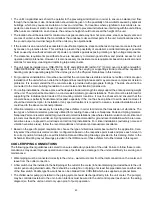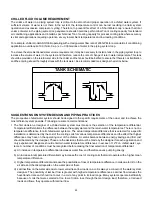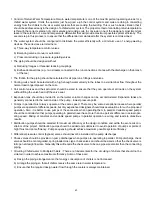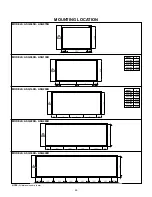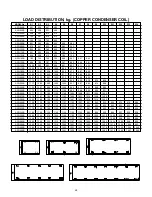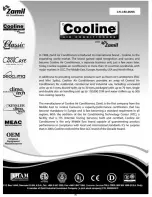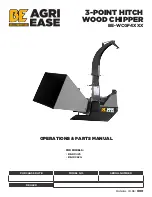
3
4
APPLICATION GUIDELINES
INTRODUCTION
These guidelines should be considered when designing systems and their installation utilizing COOLINE ASQ series
liquid chillers. Stable operation, performance and reliability of units is often dependent upon proper compliance with
these recommendations. When any application varies from these guidelines, it should be referred with Cooline Air Con-
ditioners for specific recommendations.
UNIT SELECTION/SIZING
Unit selection procedure and capacities are provided in this catalog for proper selection. The COOLINE electronic selec-
tion program may also be utilized for this purpose.
Over sizing chillers beyond a maximum limit of 5 – 10 % in order to assure adequate capacity or considering future
expansions is not recommended. Over sizing adversely affects the operating efficiency due to erratic system operation
and excessive compressor cycling which also results in reduced compressor life. It should be noted that, units operate
more efficiently when fully loaded rather than larger equipment operating at partial capacities. In addition, an oversized
unit is usually more costly to purchase, install and operate.
When over sizing is desired due to anticipation of future plant expansion, consider using multiple units. For example,
install a single chiller for the present load requirement and install a second chiller for the foreseen additional load demand
due to expansion. Further, it is also recommended that installing two chillers instead of a single chiller be considered in
applications where partial load operation at low capacities is necessary.
Operation of two chillers at higher loading is preferred to operating a single chiller at or near its minimum possible capacity.
FOULING FACTOR AND WATER REQUIREMENT
The tabulated performance data provided in this catalog are based on a fouling factor of 0.00010 hr-ft
2
-
0
F/Btu (0.000018
m
2
-
0
C/W). As fouling factor is increased, unit capacity decreases and power input increases. For unit selection at other
fouling factors, apply appropriate correction factor from the table provided in this catalog.
These chillers are suitable for operation with well maintained water systems. Using unclean and untreated water may
result in scale and deposit formation causing reduced cooler efficiency or heat transfer and corrosion or pitting leading to
possible equipment damage. The more scale forming material and suspended solids in the system water, the greater the
chances of scale and deposit formation and fouling. These include calcium, magnesium, biological growth (algae, fungi
and bacteria), dirt, silt, clays, organic contaminants (oils), silica, etc. which should be kept to the minimum to retard scale
and deposit formation. In order to prevent corrosion and pitting, the pH value of the water flowing through the cooler must
be kept between 7 and 8.5. COOLINE recommends that a water treatment specialist is consulted to provide and maintain
water treatment, this is particularly critical with glycol systems.
EFFECT OF ALTITUDE ON UNIT CAPACITY
The tabulated performance data provided in this catalog are for use at or near sea level altitude application. At altitudes
substantially above sea level, the decreased air density will reduce condenser capacity and therefore unit capacity. For unit
selection at these higher altitudes, apply appropriate correction factor from the table provided in this catalog.
HIGH AMBIENT CONSIDERATION
These chillers are designed for year round operation over a range of ambient temperatures. As a standard, these chillers
can start and operate satisfactorily up to 125
0
F (52
0
C) ambient temperature at rated nominal voltage.
WATER FLOW RATES AND COOLER PRESSURE DROP
The maximum and minimum water flow rates for all unit models and the pressure drop chart are provided in this catalog.
The design water flow rate must be within this range. Design flow rates below the minimum limits will result in laminar
flow causing freeze-up problems, stratification and poor control and flow rates beyond the maximum limits cause exces-
sive pressure drop and severe tube erosion.
During unit operation, water flow rate must not vary more than ± 5% from the design flow rate. The water flow switch should be
calibrated accordingly. The piping and pumping layout should be right for the application and must assure proper water return
and circulation. When using glycol solution, flow rate and pressure drop are higher than with water, therefore care must be
taken not to exceed the limits. In such applications, consult Cooline Air Conditioners for specific recommendations.





















